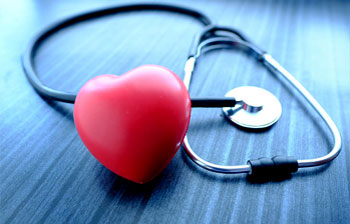Diabetes Information:



Type I Diabetes: Also known as juvenile diabetes. This type occurs when the body fails to produce insulin. People with type I diabetes are insulin-dependent, which means they must take artificial insulin daily to stay alive.
Type 2 Diabetes: Type 2 diabetes affects the way the body uses insulin. While the body still makes insulin, unlike in type I, the cells in the body do not respond to it as effectively as they once did. This is the most common type of diabetes, according to the National Institute of Diabetes and Digestive and Kidney Diseases, and it has strong links with obesity.
Gestational Diabetes: This type occurs in women during pregnancy when the body can become less sensitive to insulin. Gestational diabetes does not occur in all women and usually resolves after giving birth.
Less common types of diabetes include monogenic diabetes and cystic fibrosis-related diabetes.
Diabetes Symptoms
Diabetes symptoms are caused by rising blood sugar.
General Symptoms
The general symptoms of diabetes include:
- Increased Hunger
- Increased Thirst
- Weight Loss
- Frequent Urination
- Blurry Vision
- Extreme Fatigue
- Sores that don’t heal
Symptoms in Men
In addition to the general symptoms of diabetes, men with diabetes may have a decreased sex drive, erectile dysfunction (ED), and poor muscle strength.
Symptoms in Women
Women with diabetes can also have symptoms such as urinary tract infections, yeast infections, and dry, itchy skin.
Type 1 Diabetes
Symptoms of type 1 diabetes can include:
- Extreme Hunger
- Increased Thirst
- Unintentional Weight Loss
- Frequent Urination
- Blurry Vision
- Extreme Fatigue
- Tiredness
It may also result in mood changes.
Type 2 Diabetes
Symptoms of type 2 diabetes can include:
- Increased Hunger
- Increased Thirst
- Increased Urination
- Blurry Vision
- Tiredness
- Sores that are slow to heal
It may also cause recurring infections. This is because elevated glucose levels make it harder for the body to heal.
Gestational Diabetes
Most women with gestational diabetes don’t have any symptoms. The condition is often detected during a routine blood sugar test or oral glucose tolerance test that is usually performed between the 24th and 28th weeks of gestation.
In rare cases, a woman with gestational diabetes will also experience increased thirst or urination.
The bottom line
Diabetes symptoms can be so mild that they’re hard to spot at first
Diet and Diabetes
Eating a diet high in fresh, nutritious foods, including whole grains, fruits, vegetables, lean proteins, low-fat dairy, and healthy fat sources, such as nuts.
Avoiding high-sugar foods that provide empty calories, or calories that do not have other nutritional benefits, such as sweetened sodas, fried foods, and high-sugar desserts.







Managing Diabetes
Lifestyle modification slow, steady weight loss goals are more likely to help a person retain long-term benefits.
Medications
Doctors treat diabetes with a few different medications. Some of these drugs are taken by mouth, while others are available as injections.
Self-Monitoring Tips
Self-monitoring blood sugar levels is vital for helping to regulate meal scheduling, physical activity, and when to take medication, including insulin. While self-monitoring blood glucose (SMBG) machines vary, they will generally include a meter and test strip for generating readings and a lancing device to prick the skin for obtaining a small quantity of blood.
Refer to the specific instructions of a meter in every case, as machines will differ.
A person who is self-monitoring diabetes uses a device called a lancet to prick the skin. While the idea of drawing blood might cause distress for some people, the lancing of the finger to obtain a blood sample should be a gentle, simple procedure.
While remembering to self-monitor involves lifestyle adjustments, it need not be an uncomfortable process.
Outlook
Diabetes is a serious, chronic condition. According to the American Diabetes Association (ADA), the condition is the seventh leading cause of death in the U.S.
While diabetes itself is manageable, its complications can severely impact on daily living, and some can be fatal if not treated immediately.
Complications of diabetes include:
- Dental and Gum Diseases
- Eye Problems and Sight Loss
- Foot Problems, ncluding numbness, leading to ulcers and untreated injuries and cuts
- Heart Disease
- Nerve Damage, such as Diabetic Neuropathy
- Stroke
- Kidney Disease
In the case of kidney disease, this complication can lead to kidney failure, water retention when the body does not dispose of water correctly, and a person experiencing difficulties with bladder control.
Regularly monitoring blood glucose levels and moderating glucose intake can help people prevent the more damaging complications of type 2 diabetes.
For those with types 1 diabetes, taking insulin is the only way to moderate and control the effects of the condition.
Diabetes is a life-changing condition that requires careful blood sugar management and a healthy lifestyle for a person to be able to manage it correctly. There are several different types of the disease. Type I occurs when the body does not produce insulin. Type 2 happens when excess consumption of high-sugar foods flood the blood supply with glucose and reduce the production and effectiveness of insulin.
People can take supplementary insulin to manage the condition and improve glucose absorption. If a person has prediabetes, they can reduce the risk of full diabetes through regular exercise and a balanced, low-sugar diet.
The complications of diabetes can be severe, including kidney failure and stroke, so managing the condition is vital.
Anyone who suspects they may have diabetes should visit their doctor.
If prediabetes causes no symptoms, how do I know I have it and take steps to reverse the condition ?
In general people who are at risk for diabetes often get screened at their doctor’s office. The risk factors are listed above, and different groups have slightly different recommendations about when and how often to screen.
Most of the time, we use a test called a hemoglobin A1C that tells us how you have controlled your sugars over the previous 3 months. This test can also tell your doctor how likely it is that you will develop diabetes in the near future — the higher the level, then the more likely this is.
The main steps to reverse prediabetes are the same things we talk about above — losing weight if you are overweight, getting regular exercise, and eating a balanced diet.
Wellness Vs Illness
- Habits : Refraining from drinking excessive amounts of alcohol or keeping intake to less than one drink a day for women or two drinks a day for men.
- Stress and Depression
- Other Hormonal Problems
Exercise
Engaging in at least 30 minutes exercise a day on at least 5 days of the week, such as of walking, aerobics, riding a bike, or swimming.
Yoga


Fitness

